Exhaust sound — to some it’s music and to others it’s noise. It’s hard to rationalize why the vast majority of us car enthusiasts love loud exhausts. But there’s no denying that there’s something really gratifying about changing the way your car sounds.
It needs to be done properly though. “Car mods” like drilling holes in the muffler or installing an oversized muffler (fart cans) will make your exhaust louder, but they won’t help performance and won’t sound good at all.
You want to keep things as functional as possible or avoid doing damage at the very least. The whole point of modifying your car is to make it better than what it was before.
With that in mind, in this guide, we’re going to cover the top 10 most effective and appropriate ways to make your car exhaust louder and sound nicer.
Let’s dive right in.
Understanding Exhaust Sound
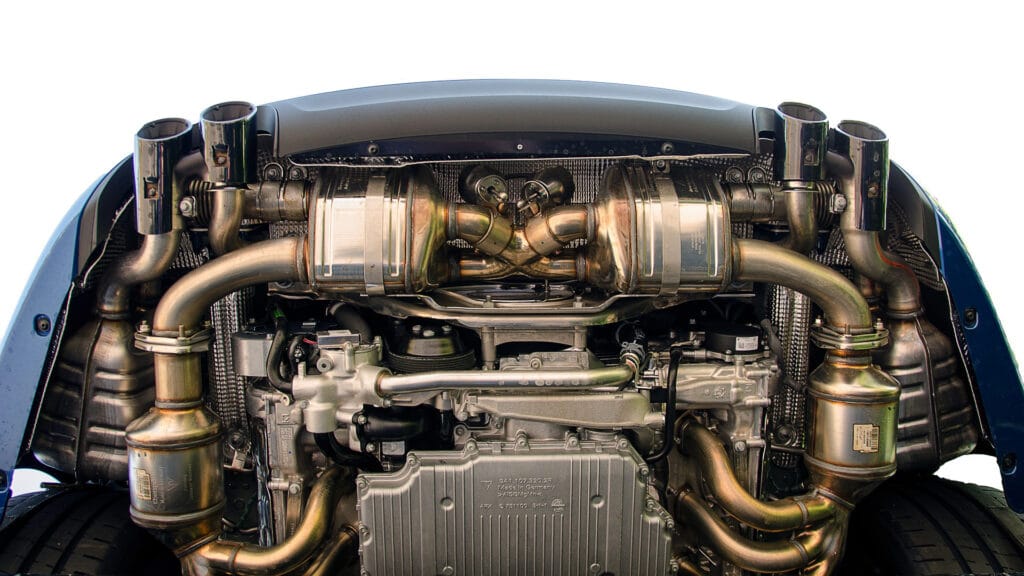
Exhaust sound and engine sound are two different things. No matter what you do to your exhaust system, there’s no way you can make your inline-4 engine sound like a V8, or a boxer engine sound like an inline-6.
There are many factors that shape and influence exhaust sound. When you listen to a car rev, what you hear is a combination of sounds coming from the engine, intake, and exhaust system.
Automakers allot massive budgets to their NVH (noise, volume, and harshness) departments to develop the ideal exhaust sound.
The slightest change in your exhaust system can change your exhaust note, but only to a certain extent.
Knowing how exhaust systems work will help you understand a lot about why car exhausts sound the way they do.
Understanding what makes your car sound the way it does will help you choose the right method to make your exhaust sound different or louder.
How to Make Your Exhaust Louder
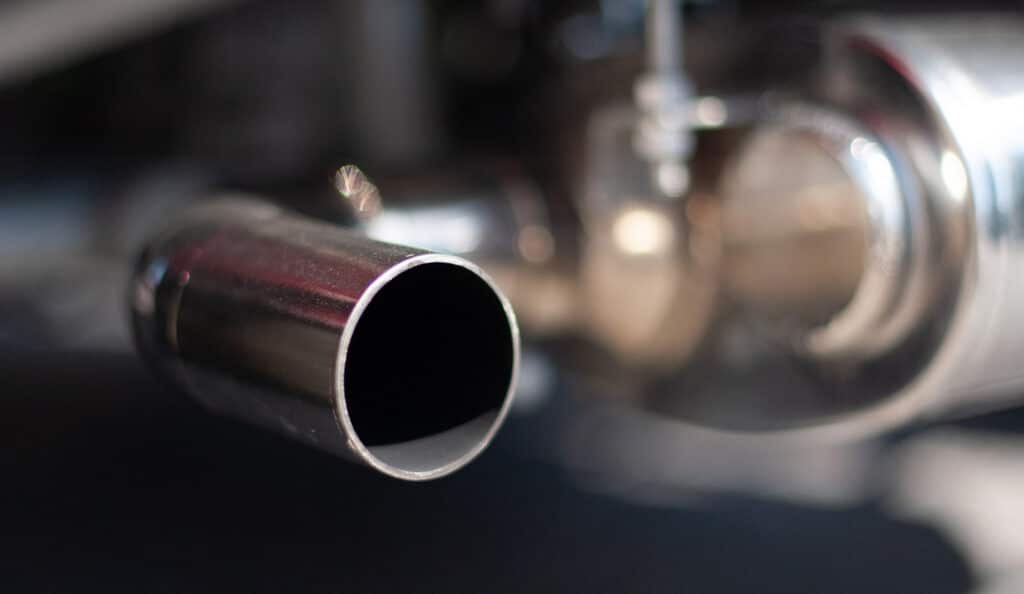
There are a bunch of different ways to go about this –– these upgrades start at close to $100 and go all the way up into the thousands.
Test pipes and exhaust cutouts are cheap upgrades that allow you to modify your exhaust sound on a budget.
But if budget is not a concern and you want to see an actual improvement in performance we recommend installing a catback exhaust system or headers –– these will make the biggest difference.
Louder Exhaust Without Added Power
These modifications center around the idea of improving your exhaust note. You won’t see a measurable increase in power but your car will get slightly louder.
If it’s just sound that you want and you don’t really care about going faster, then the following exhaust mods are your best options.
Exhaust Cut-Out

Ever wished you could switch between a louder and a softer exhaust note at the push of a button –– loud for when no one’s around, and soft for when you don’t want to draw attention?
Exhaust cut-outs allow you to do just that. These can be installed somewhere along the exhaust pipe that connects the mid-pipe with the muffler.
The device is engineered to temporarily open up an air vent for the exhaust gases to escape. Because this vent is located behind the muffler, it makes the exhaust sound louder when it’s open.
The opening-closing mechanism of the vent is taken care of by a butterfly valve — much like what you see in throttle bodies. This valve is mechanically operated by a vacuum hose that connects to the engine.
This vacuum hose is toggled on or off with the help of a solenoid connected to a wireless receiver.
Ergo, when you push the button on the remote key fob that comes with it, it opens and shuts the exhaust cut out.
Exhaust Tips

Whether exhaust tips make your car louder or not is a hotly debated topic. We find that they do alter the exhaust note slightly, but they don’t make it any louder.
Because they’re installed at the extreme tail end of the exhaust system, it’s nearly impossible for them to have an impact on airflow. An added advantage is that they add to your car’s aesthetics.
Axle-Back Exhaust
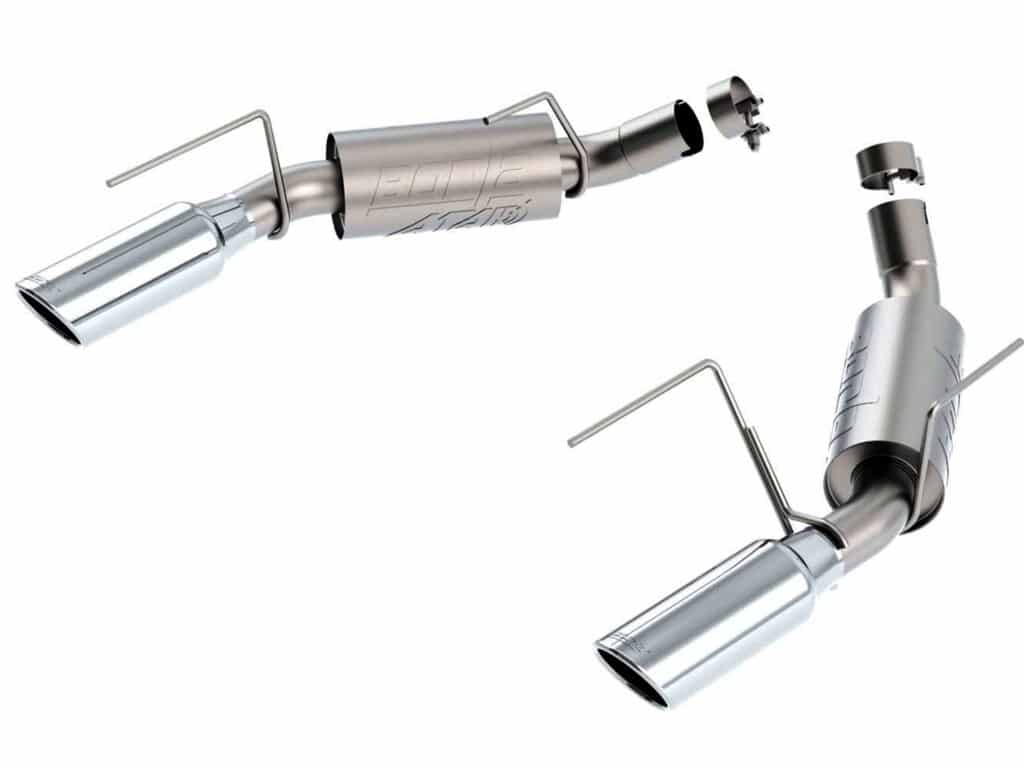
If you like the idea of:
- minimally invasive exhaust modifications,
- not making your car too loud, and
- installing the cheapest functional exhaust upgrade,
Then you should definitely consider installing an axle back exhaust system. While they’re not as cheap as exhaust tips, they’re a much better purchase.
Axle back exhausts are meant to replace the stock exhaust tips and mufflers. They don’t add any power but they’re the lowest hanging fruit when it comes to making your car sound a lot nicer.
Install a Glasspack Muffler

Glasspack mufflers are similar to aftermarket mufflers in terms of performance, but they are different in the way they are built and the material they’re built with.
It’s basically a straight perforated pipe that’s wrapped in fiberglass packing. It’s compact, flows really well, and in some cases even helps to reduce back pressure and improve scavenging.
However, bolting one of these on will require you to cut your exhaust pipes. The result is a louder rumble and a slightly quicker throttle response.
Exhaust Mods With Performance Benefits
These are the real deal –– the mods you really want if you want to make your car sound nicer and louder.
There’s nothing better than having a car that goes as fast as it sounds. If you want to see some real performance gains and improve your exhaust sound at the same time, consider looking into the following exhaust mods.
Cat Delete
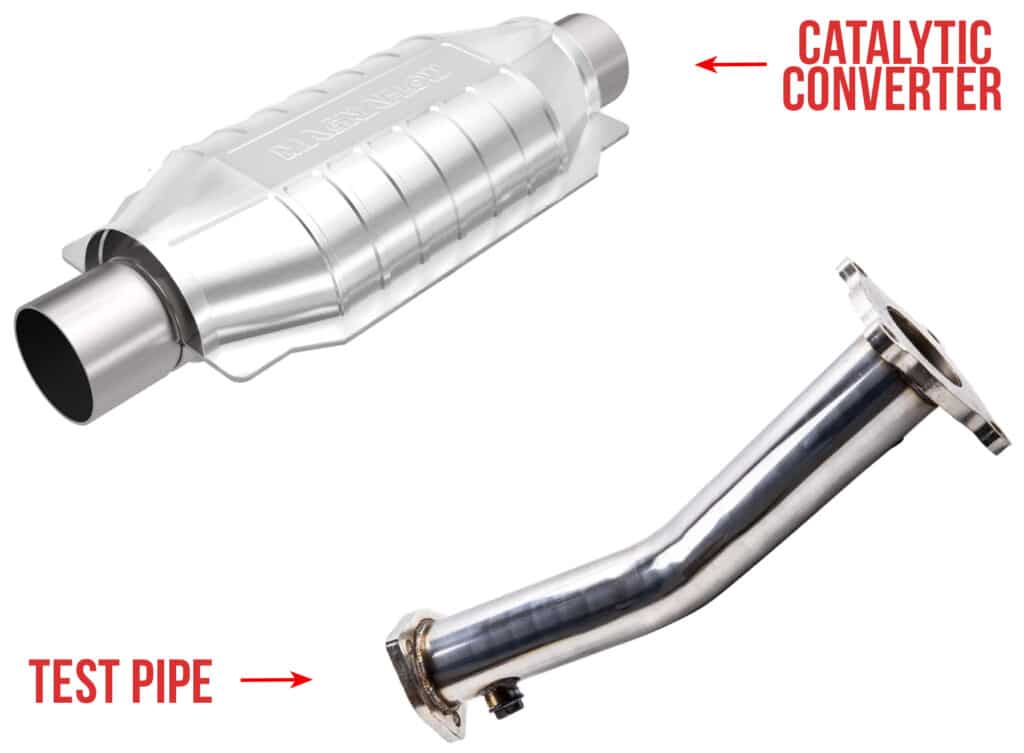
Straight pipes are the holy grail of exhaust mods, but they’re more geared towards track use given their incremental performance gains and obnoxiously loud sound. Depending on where you live, they could also make your car illegal to drive on the road.
This is because straight pipes replace your car’s catalytic converter, allowing a much better flow of exhaust gases and a much louder sound.
The cat-con is the most significant flow restriction in your exhaust system. Getting rid of it frees up some airflow and helps performance.
However, if you’re going to drive on the street 90% of the time and barely ever take your car to the track, we suggest that you keep your cat-con intact.
Resonator Delete
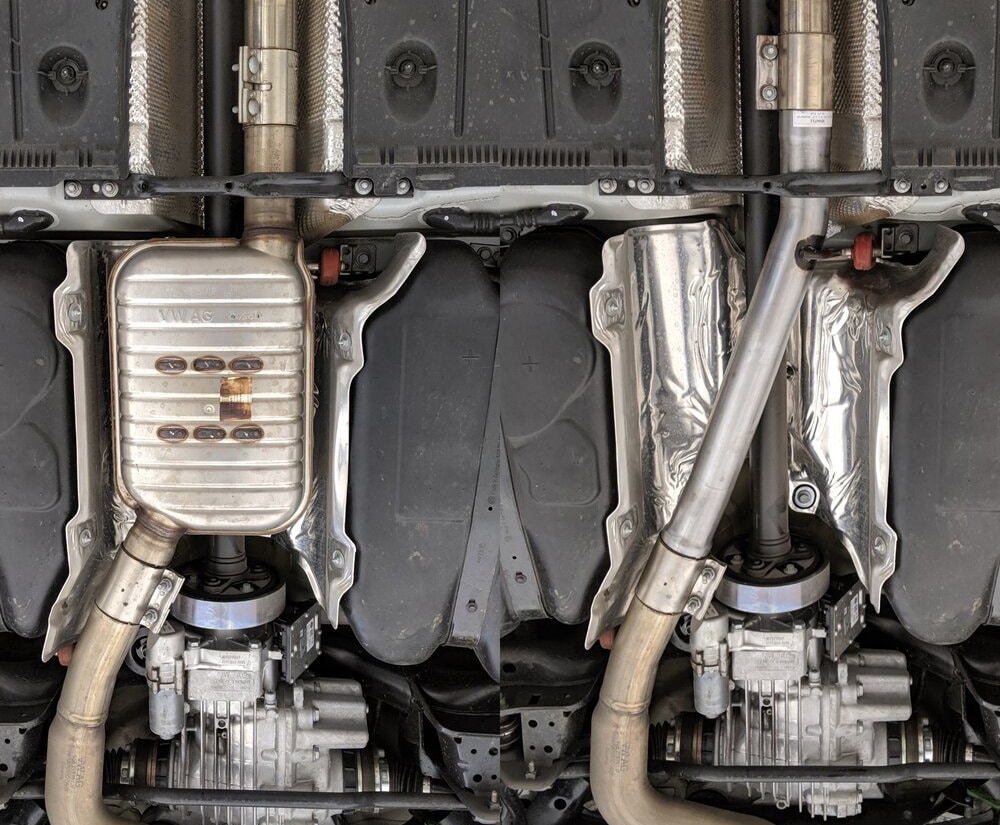
Resonators are typically bolted on right before the mufflers and they’re responsible for molding and shaping the exhaust frequencies before they actually reach the muffler.
Think of the resonator as a pre-muffler. Without it, your car will sound, eh, interesting. The muffler will have to work with the engine’s raw sound and won’t be able to do its job properly.
This is what’s going to make your car louder. There’s no real point of a resonator delete if you’re still keeping the stock muffler.
Once you start deleting components from your exhaust system, you’ll realize that you might as well go all the way and keep it as clean and straight as possible.
Muffler Replacement or Removal
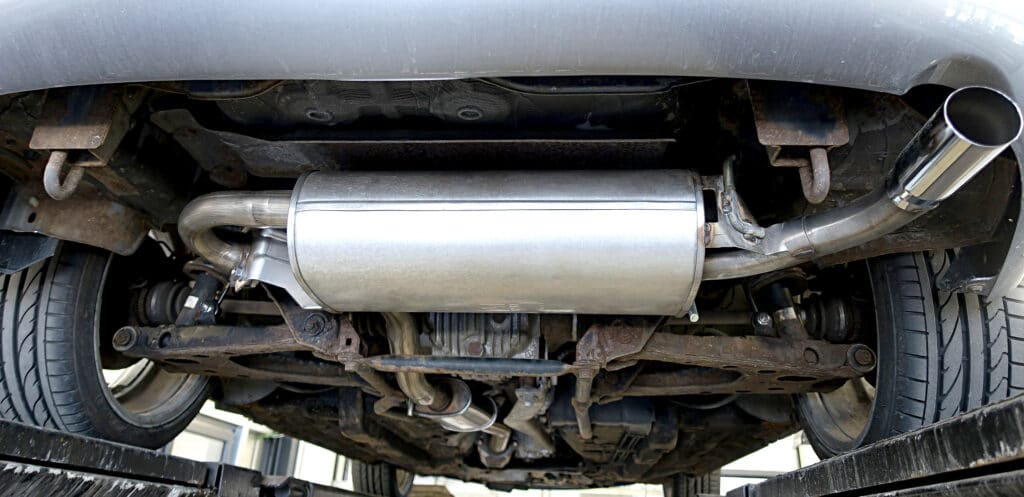
The whole point of a muffler is to muffle the exhaust sound, making it quieter and more tolerable for the uninitiated non-car people and the government.
By removing these entirely, you’ll bypass the main component that shapes your exhaust sound and your car will inevitably get louder. Although, we aren’t suggesting that everyone should do a muffler delete. You do need a muffler –– just the right kind.
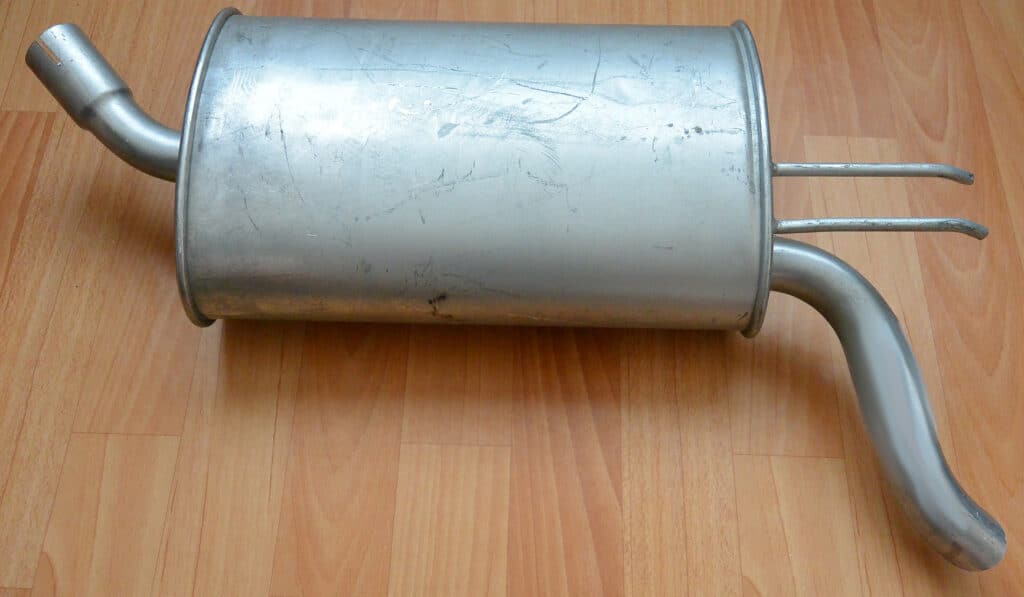
These are usually included with aftermarket catback exhaust systems. They’re lighter, less restrictive, and more free-flowing as compared to the stock mufflers. Or you could go ahead and install glasspack mufflers.
Cat-Back Exhaust

Aftermarket catback exhausts strike the perfect balance between affordability, power gain, and louder sound. If you had to choose only one product from this list to make your exhaust louder, make sure it’s this one.
Catback exhausts replace everything that’s installed behind your catalytic converter with what’s essentially a straighter pipe with fewer restrictions. These are designed to replace your factory exhaust system with one that flows better.
No matter what car you drive, as long as it has some presence in the aftermarket community, chances are you will find a catback exhaust for it.
Headers / Exhaust Manifold
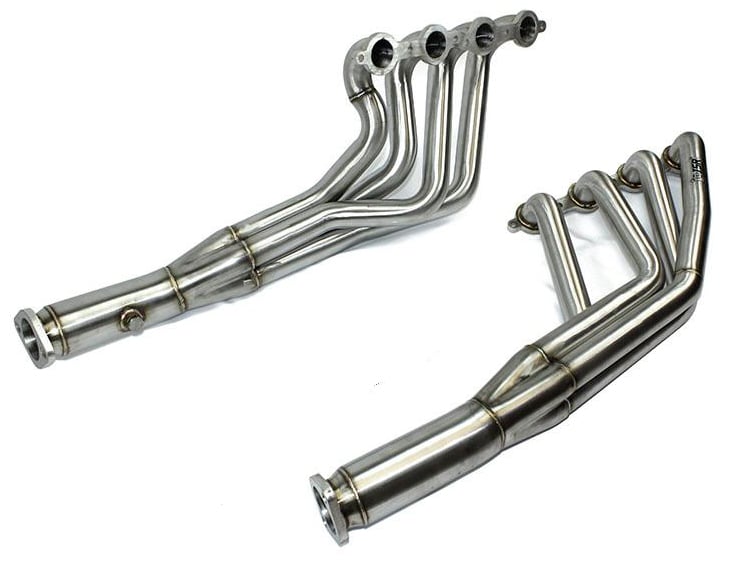
The exhaust manifold is the first set of exhaust piping that’s bolted directly onto the engine. When expelled gases first leave the cylinders, they accumulate in the manifold collector and are then released into the rest of the exhaust system.
Headers and exhaust manifolds are essentially the same things. Just that aftermarket exhaust manifolds are referred to as “headers”.
For more clarity on the difference between headers and exhaust manifolds, or the difference between 4-2-1 and 4-1 headers, check out our articles on the subject.
When it comes to invasive exhaust upgrades, headers are right up there with straight pipes. Considering that the manifold has the most important function in the exhaust assembly, modifying it will make a massive difference to how your car sounds.
By replacing your factory manifold with aftermarket headers, your car will sound like it belongs on the track.
Y Pipes
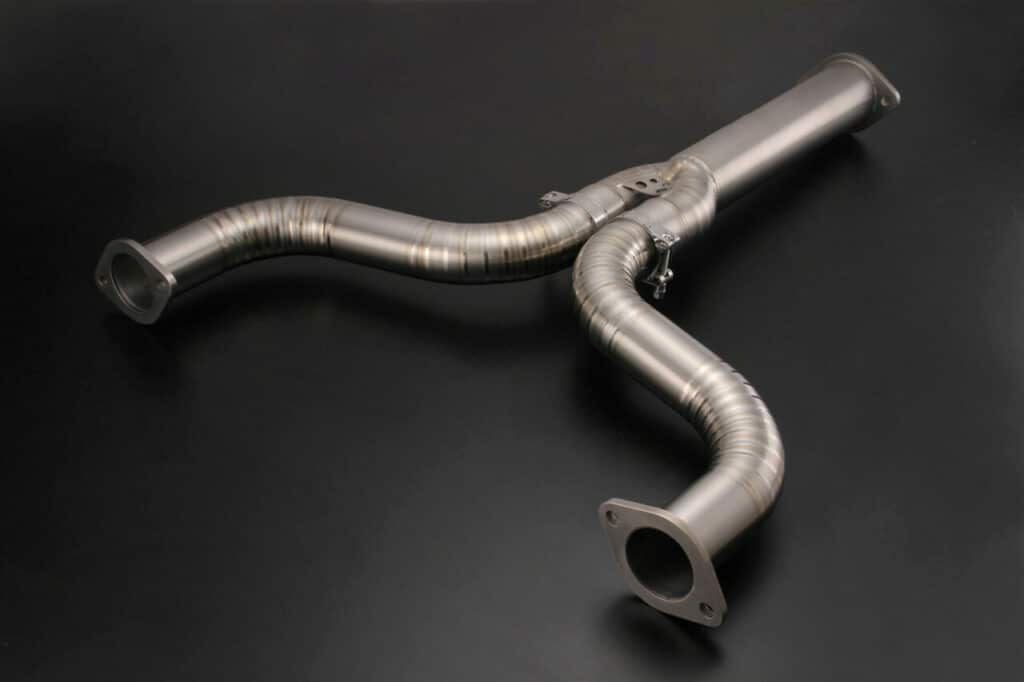
Y pipes are commonly used on cars with 6 or 8 cylinder V configuration engines where only one tailpipe is desired. Their function is to collect expelled gases from the left and right banks of the exhaust manifold.
The idea is to merge the gases at a point where the most amount of power can be extracted. If your car has a V6 or a V8 engine with a single tailpipe, your exhaust system definitely has OEM Y pipes.
By upgrading your stock Y pipes to aftermarket ones, you can free up a lot of the restriction in your exhaust system, make it louder, and significantly lighter.
Which Method Is Right for You?

How you choose to make your exhaust louder really depends on your budget and how serious of a modification you want to make.
If you only want to spruce up your daily driver and make it sound sportier, then:
- exhaust cut outs,
- exhaust tips,
- glasspack muffler, and
- axle back exhaust are your best options.
If you don’t mind altering a large part of your exhaust system in favor of added sound and power, then:
- catalytic converter, muffler or resonator delete,
- catback exhaust
- headers, and
- Y pipes are ideal.
Remember that getting your ECU remapped after altering your exhaust system is always a good idea. When you make any changes to the airflow rate, your ECU needs to be recalibrated and the fueling needs to be adjusted accordingly.
The more thorough you are with these preventative maintenance measures, the fewer issues you’ll run into with things like check engine lights, reduced performance, poor throttle response, or reduced fuel economy.
What’s your preferred way to make your car sing? Let us know in the comments below!

